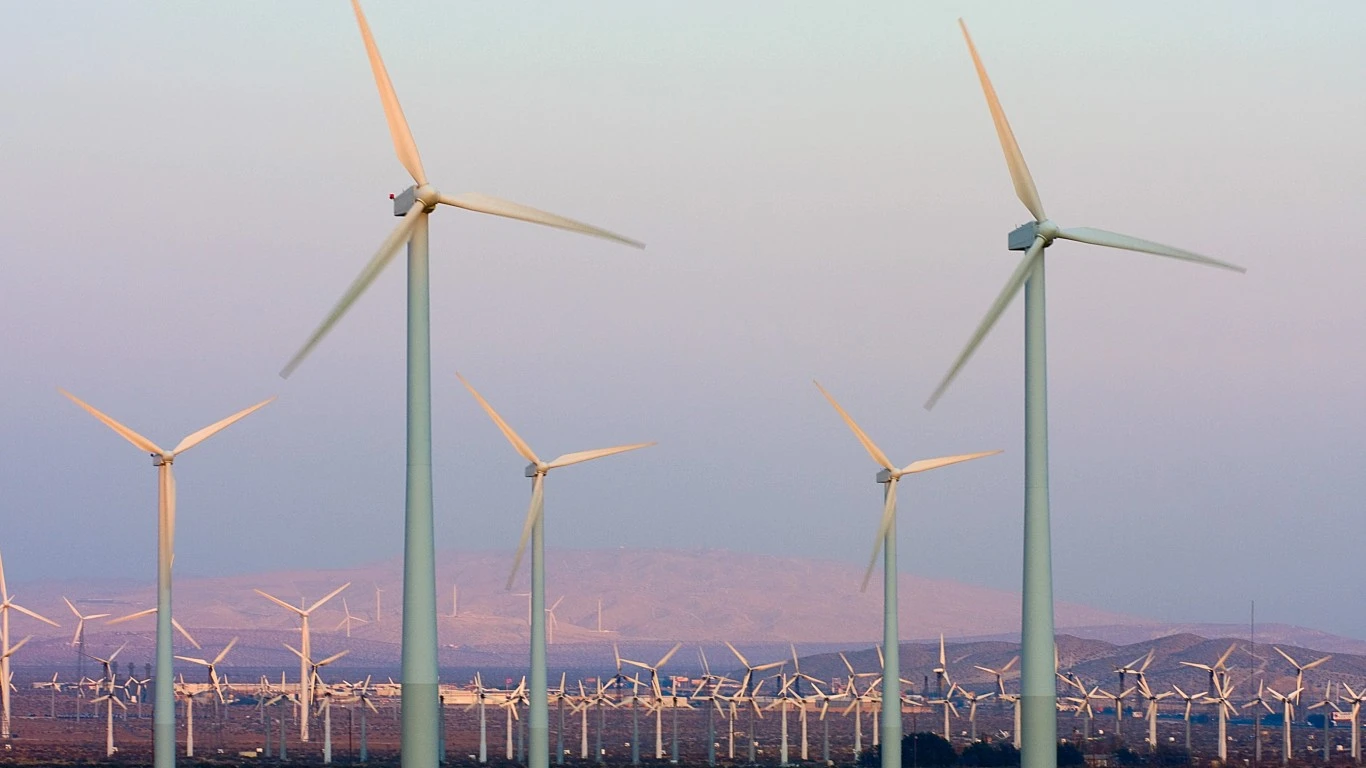
The power of the wind has been harnessed for millennia and began to be used for electricity generation in the late 1800s and early 1900s before the advent of rural electrification. The oil shortages of the 1970s sparked a comeback. Small power-generating windmills, called turbines, were constructed as something of a novelty, usually designed to support a single business or facility.
Later, these windmills inspired both awe and outrage as groups of them began to appear on the landscape in the 1980s and 1990s. As the technology grew, spurred by government incentives and clean energy requirements, the turbine’s novelty and its resemblance to an old style windmill disappeared. Wingspans grew to the length of football fields, and wind power facilities became “farms,” covering thousands of acres across hills and prairies. (Find out if wind farm jobs are among the fastest growing and shrinking clean energy jobs.)
To identify the 48 largest wind farms in the United States, 24/7 Wall St. used a variety of internet sources, including Wikipedia, to find the wind farms with the largest installed capacity in MegaWatts.
Wind generated power is now growing exponentially in order to meet climate change commitments. In the last two decades, electricity generation from wind power grew from 6 billion kilowatt hours to 380 kWh. In 2020 alone, wind power helped avoid 319 million metric tons of CO2, enough to power 42 million homes. (Conversely, these are the 25 countries increasing emissions the fastest.)
Today, wind is the largest source of renewable energy in America, providing 9.2% of the country’s utility-scale power. In eight states, wind provides over 25% of the energy generated.





